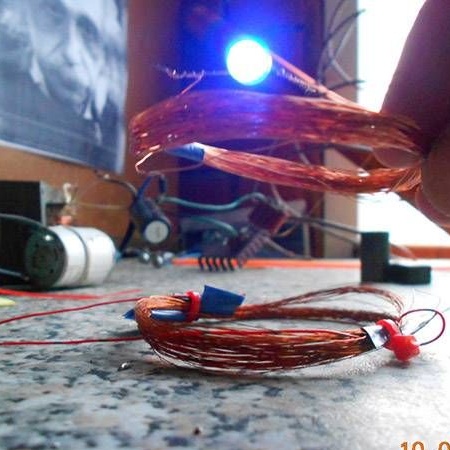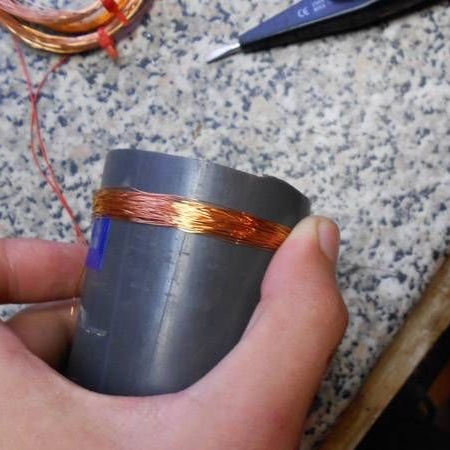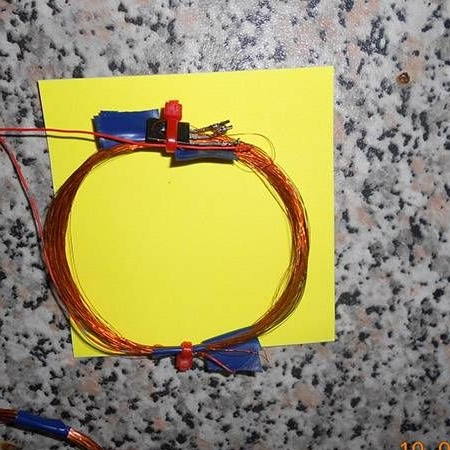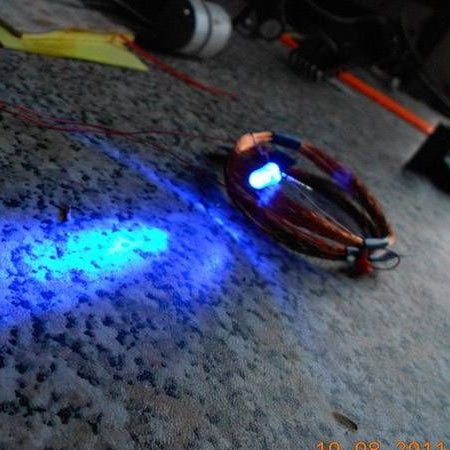
This article will talk about one of the simplest manufacturing schemes of some kind of contactless key circuit. In essence, this will be a device that consists of a transmitter operating by supplying the battery and a receiver for this transmitter, which can be installed in any device. The meaning of the operation of such a device is as follows: the device into which the receiver is inserted begins to work only when the transmitter is approaching.
The operating range of the assembled proximity key device is approximately 5 cm.
Materials:
transistor KT940
1.5V battery
- round frame with a diameter of 5 cm
- copper wire 0.1-0.6 mm
-relay
Description of the operation and creation of the device:
Below is a diagram of this device:
To begin with, all the necessary details and elements were collected to create this device.

The transmitter in this device is a standard high-frequency generator, and a blocking generator will serve as its basis. The author used the KT940 transistor in his circuit, although it is indicated that other npn transistors of the 3, 6, 9 series are suitable, since they are basically generator ones.
In fact, a 1.5V battery will suffice for the operation of the transmitter circuit, but if you install a battery with a higher voltage, the range at which the key device will operate will be higher.
One of the obvious disadvantages when using such a device circuit is the fact that to start the transmitter, it is necessary to short-circuit the base and collector. In principle, a similar flaw can be solved by installing the start button.
The receiver for this device works as follows: when the L3 coil enters into resonance with the transmitter, an alternating current is induced in it, which is rectified and opens the transistor T2 (MP20OS). Then, approximately according to the same principle, relay K1 is activated. The main device is subsequently connected to this relay, which is modified by a contactless key system.

To create a transmitter, the first thing you need to do is reel a coil. A round frame with a diameter of about 5 cm and a wire were used to wind the reel. The author advises using a wire from 0.1 mm to 0.6 mm, given that the thicker the wire, the greater the current consumption. The number of turns for coils L1 and L3 is 60, and for coil L2 is 30 turns.

After this, the windings are soldered with a transistor according to the above diagram and stacked one on top of the other. Thus, a rather interesting installation is obtained: when the LED is connected directly to the outputs to the L3 coil, an effect is obtained that can be called a kind of wireless power transmission.
Actually, in the same way you can check the operation of the device. If the device does not work, it is necessary to close and open the base and the collector, or turn over one of the windings of the transmitter.

Tests have shown that the field passes through 338 layers of glossy paper, which means that there will be no problems with the operation of the device when it is installed in the case. The main thing to remember is that the case should not be metal.

By adding a relay and electronics to this scheme, it will be possible to find a huge number of applications for such a device, it can be either various entertainments with LEDs, or improvement of devices, devices or even a car to increase the guarantee of security against theft.
Below is a video showing the operation of the receiver and transmitter:

